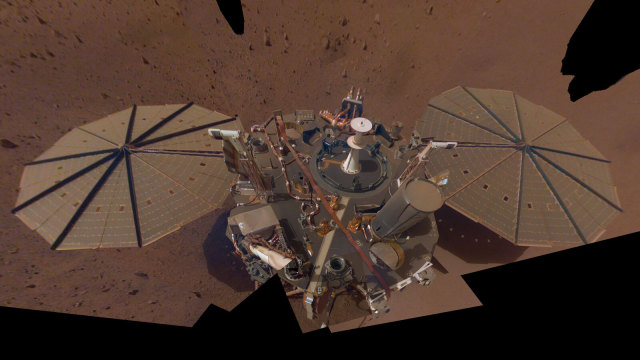The InSight automatic station has switched to safe mode due to a large local dust storm on Mars. Now the station maintains its operability at a minimum level and does not conduct scientific observations, and next week it will begin to be taken out of safe mode, it is reported on the NASA website.
InSight has been working on Mars for more than three years, exploring the internal structure and climate of the planet. The power station is provided by two two-meter round solar panels. As with many rovers, their power output is constantly falling due to dust deposition. Engineers hoped that dust vortices would clean the batteries, but this did not happen . The situation was partially corrected with the help of a new cleaning method, but the threat of premature shutdown still hangs over the station.
On January 7, 2021, InSight went into safe mode due to a large local dust storm, which greatly reduced the amount of sunlight available to the batteries. All scientific observations were temporarily discontinued. On January 10, engineers restored communication with the station, determining that the device maintains stable operation, albeit at a low level of available power.
New data from the Mars Reconnaissance Orbiter shows that the storm is already subsiding. The InSight team hopes that the station will be taken out of safe mode next week, after which engineers will assess the dust layer left by the storm, as well as begin to put scientific instruments back into operation.
InSight data has already allowed scientists to roughly understand where the main boundaries of the separation of the layers of Mars lie, draw up a detailed diagram of the subsurface layers of the planet and determine the size its cores. You can learn about how the station explores Mars from the materials "Look inside the Red Planet", "Seismograph for Mars" and "45 centimeters in 50 years" .
Alexander Voityuk

